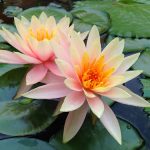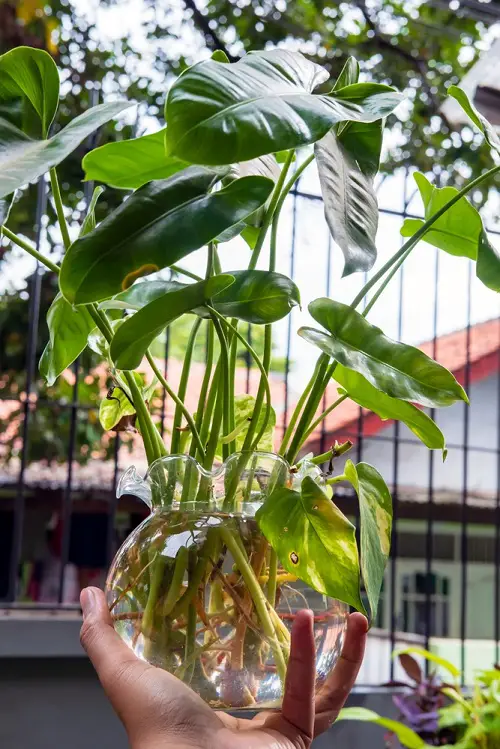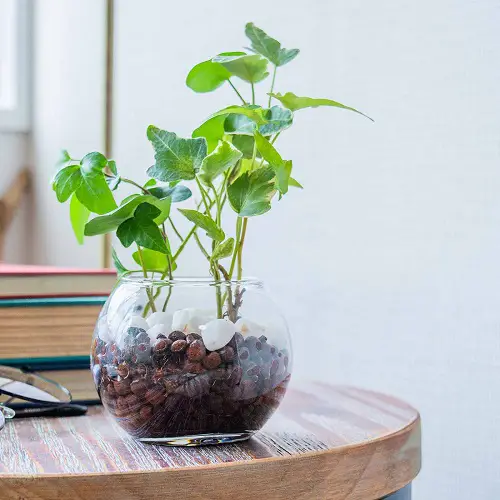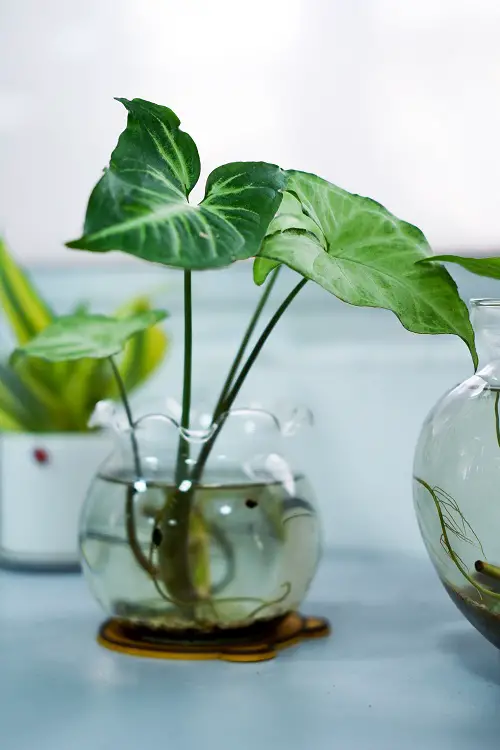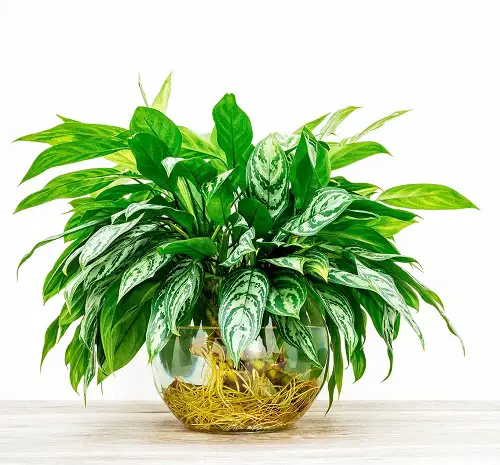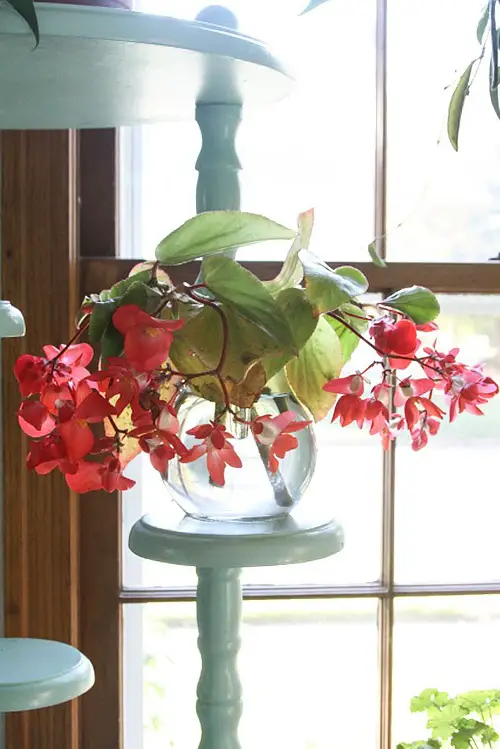Plants to Grow in Glass Bowls of Water is a beautiful way to enhance your living environment. How? Check it out!
This guide highlights exceptional plants that thrive in these conditions. Each brings its unique flair and minimal care requirements to your home or office.
How to Grow Plants in Water- General Tips
When you are handling plants to grow in glass bowls of water, it is essential to follow some basic tips just to ensure their health and longevity. For example, changing the water weekly to prevent bacteria growth or stagnation can harm the plant.
Fill your containers with distilled or non-chlorinated water, as tap water may contain harmful chemicals to plants. Avoid placing too many cuttings or leaves in a single container. Overcrowding can restrict growth and lead to poor health. Also, keep leaves above the water level to prevent rot and fungal infections.
Always use clear containers to allow light to reach the roots, and make sure the container size is appropriate for the plant to avoid overcrowding. Additionally, these plants thrive in bright, indirect light. So, rotate the container periodically to ensure even growth and prevent the plant from leaning toward the light source (legginess).
Plants to Grow in Glass Bowls of Water
1. Water Lettuce
Botanical Name: Pistia stratiotes
When grown in a clear water container, water lettuce creates a serene aquatic display—it floats elegantly with its lettuce-like leaves.
It thrives in full to dappled sunlight, requires fresh water, and is best kept away from pets and children due to its toxicity.
2. String of Hearts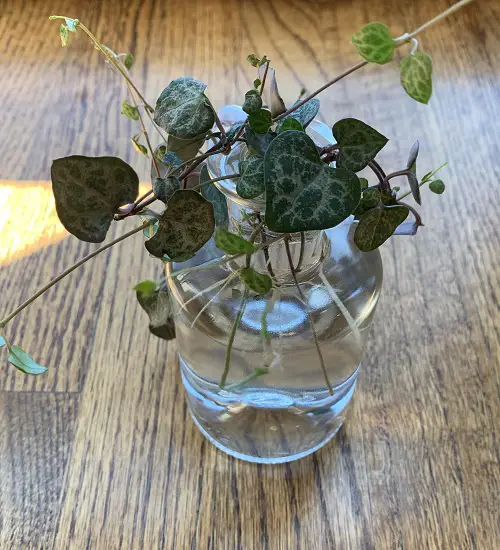
Botnaical Name: Ceropegia woodii
Position it where it can receive filtered sunlight, away from direct rays. Submerge only the roots to avoid rot, and change the water biweekly.
A diluted liquid fertilizer can help boost its growth and flowering—it is all set to grow beautifully!
3. Baby’s Tears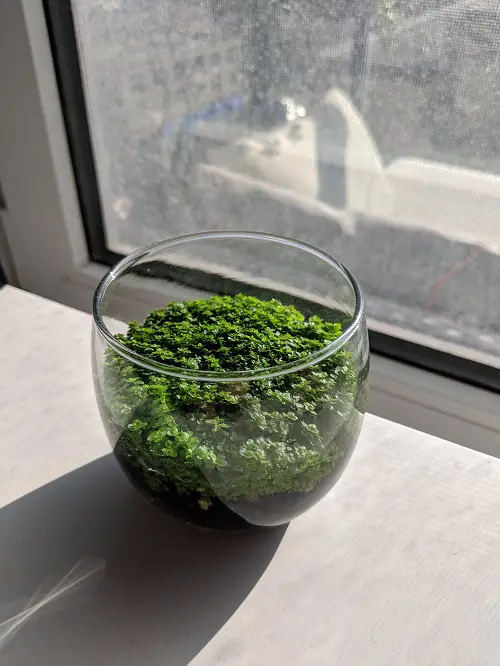
Botnaical Name: Soleirolia soleirolii
Baby’s Tears can transform a simple glass bowl into a lush green oasis!
Only you have to snip a small section of stems, place them in water, and watch as they quickly take root. Refresh the water weekly!
4. Pothos
Botanical Name: Epipremnum aureum
How do you propagate or grow pothos in water?
Place your pothos in a transparent bowl on a shelf where indirect light spills in. Now, wait for its lush, trailing vines to enhance your space’s beauty!
5. Philodendron
Botanical Name: Philodendron
It is known for its versatility; the philodendron thrives in water as easily as in soil.
Varieties like the Heartleaf Philodendron bring a soft, verdant aesthetic to interiors, with leaves that gently drape over the sides of the bowl.
6. Spider Plant

Botanical Name: Chlorophytum comosum
Spider plants are a robust option for water culture! Why?
Because they are known for producing rich, arching foliage that spills over the container’s edge. These plants are undemanding and only need a spacious bowl with consistent moisture to grow.
7. Lucky Bamboo
Botanical Name: Dracaena sanderiana
Lucky Bamboo is known for its resilience and architectural form! You know that, right?
This plant thrives easily in water-filled containers, where its elegant stalks can be styled into various shapes, such as spirals or braids.
8. Asparagus Fern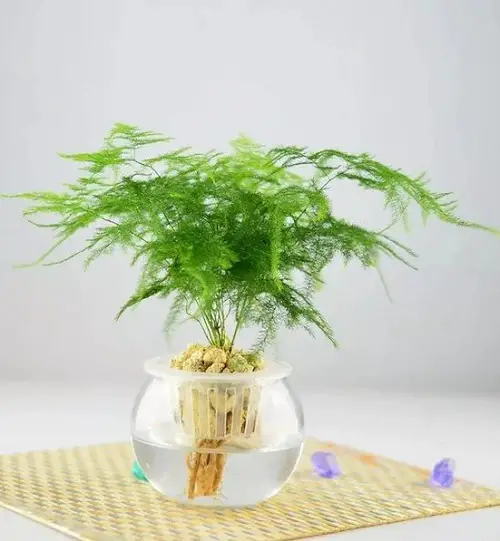
Botanical Name: Asparagus setaceus
Growing Asparagus Fern in water is simple! Use a section with roots attached, clean them, and place them in a vase with some stones for stability.
Set in a location with gentle morning sun and indirect light throughout the day. Perfect!
9. Peace Lily

Botanical Name: Spathiphyllum
Peace lilies are known for their white blooms and can be grown in water easily. Start with a broad-necked container, avoiding lead crystal to prevent contamination.
This plant not only adds a serene touch to your indoors but is also efficient in purifying air!
10. English Ivy
Botanical Name: Hedera helix
When grown in water, English ivy displays a classic appeal, with vines that trail beautifully over the edge of glass containers.
This plant adapts quickly to its environment, thriving in water if the roots are submerged.
11. Arrowhead Vine
Botanical Name: Syngonium podophyllum
Compact and versatile, the vine is ideal for small spaces. To propagate arrowhead plants in the water, clip a healthy stem just below a leaf node and place it in a water-filled bowl.
12. Chinese Evergreen
Botanical Name: Aglaonema
Known for its striking, variegated leaves, the Chinese Evergreen adapts beautifully to aquaculture. It’s a low-maintenance choice that brings life to any cozy corner with its silver, red, and pink foliage.
13. Begonia
Botanical Name: Begonia
You can effortlessly propagate Begonias in water! How? Start with a single leaf from varieties like wax, rex, or tuberous begonias. Place it in water, and let nature do the rest!
Refresh the water weekly to fend off bacteria and prevent rot.
Have a look at the best types of Rex Begonias
14. African Violet
Botanical Name: Saintpaulia ionantha
If you want to do a rewarding project – grow African violet from a leaf! Simply snip a leaf with a stem, suspend it in a water-filled jar, and in about a month, watch as tiny roots and a new plantlet begin to form.
15. Fiddle Leaf Fig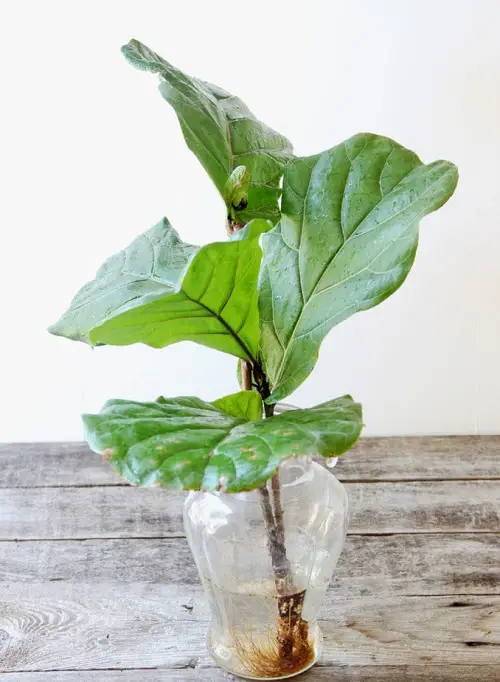
Botanical Name: Ficus lyrata
The Fiddle Leaf Fig is ideal for a stylish, soil-free setup! It thrives in bright, filtered light. Always rotate the container regularly to ensure even growth, as the plant tends to lean toward the light source.
Also, use a sturdy bowl to support its large, majestic leaves.
16. Duckweed
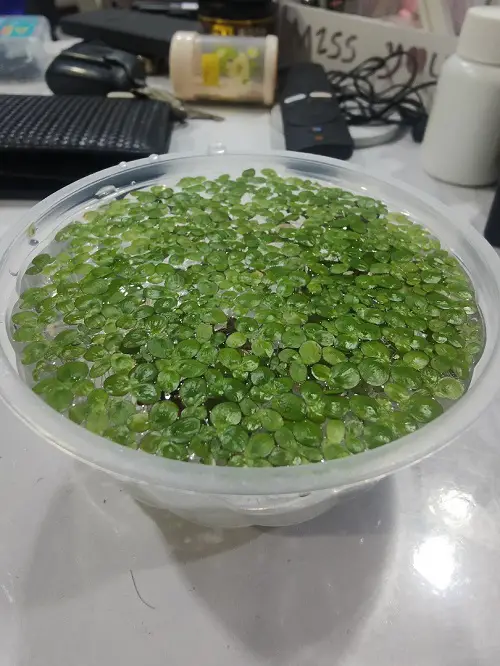 Botanical Name: Lemna minor
Botanical Name: Lemna minor
Duckweed grows quickly and doesn’t demand much space or care. It needs ample light to maintain its vibrant green color. This tiny plant is perfect for creating a green carpet over your water bowl’s surface.
17. Frogbit
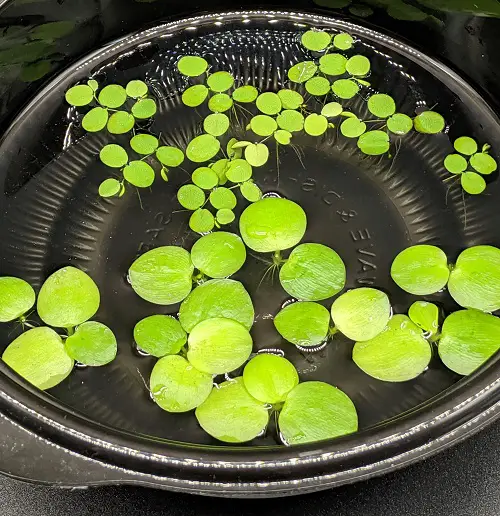
Botanical Name: Limnobium laevigatum
Like Duckweed but larger, Frogbit forms a floating rosette of light green leaves, ideal for spacious bowls.
Native to warmer climates, it grows fast and is an excellent choice for adding greenery to your indoor water gardens.
18. Coleus
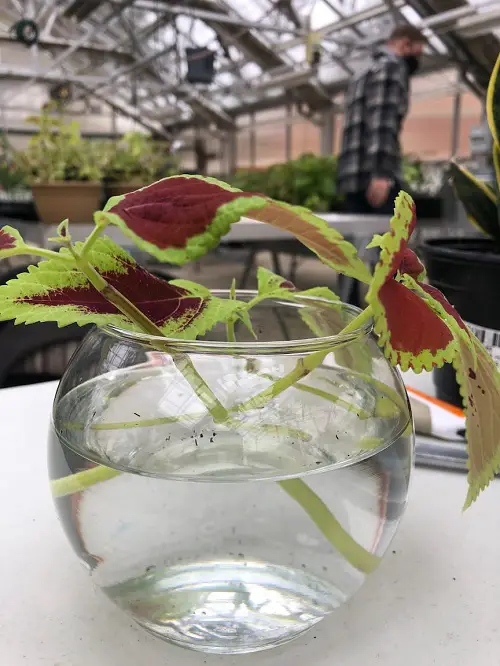
Botanical Name: Plectranthus scutellarioides
Coleus displays a variety of hues as a color spectacle and requires minimal care when grown in water.
Place it in indirect sunlight, and change the water every few days to protect bacterial growth.

